May is my absolute favorite time to visit Korea (and was always my favorite season when living in Korea!), offering a perfect blend of pleasant weather, fewer crowds, and vibrant landscapes. As spring reaches its peak, temperatures range from 52°F to 78°F (11°C to 25°C) or higher by the end of the month, making it ideal for exploring both urban and natural attractions.
Whether you're wandering through the cherry blossom remnants in Seoul or hiking the lush trails of Mt. Seorak, the weather is comfortable for outdoor activities. Although light spring rains and occasional yellow dust may occur, they are easily manageable with a light jacket and an umbrella.
The lull between the busy cherry blossom season and the summer holidays means fewer tourists, which translates to lower prices for flights and accommodations. This makes May a budget-friendly time to experience Korea's rich culture and stunning scenery.
From the serene paths of Nami Island to the historic charm of Andong Hahoe Folk Village, you'll find plenty of photo-worthy spots without the usual crowds, plus several unique festivals, such as the Jindo Miracle Sea Road Festival and the Boseong Green Tea Festival.
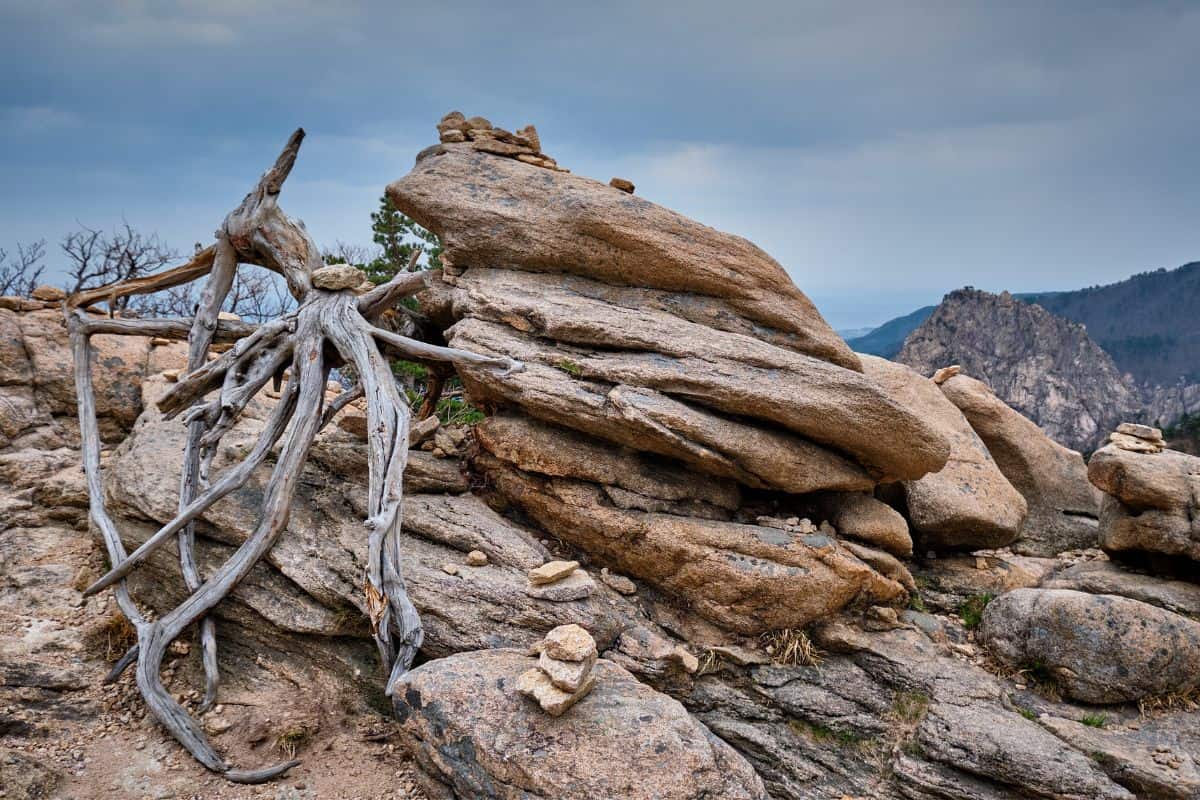
Jump to:
- 🌸 May Weather in Korea
- 👨👩👧👦 Crowd and Costs to Visit Korea in May
- 👗 What to Wear in Korea in May
- 🗺️ Places to Visit in Korea in May
- 🎆 Korean Festivals in May
- 🎉 Korean Public Holidays in May
- 🍜 Korean Foods to Try in May
- 📝 Korean Itinerary for May
- 📸 Exclusive Tours for May
- ❓ Frequently Asked Questions
- 💬 Comments
🌸 May Weather in Korea
May is a great time to explore South Korea. The weather is pleasant, with temperatures from 52°F (11°C) to 78°F (25°C). Days are sunny, perfect for short sleeves, but bring a light jacket for cooler evenings. It's a good time for hiking in National Parks like Jirisan, Songnisan, and Seoraksan, with lush greenery and the last cherry blossoms.
In Seoul, expect night temps as cold as 46°F (8°C) and daytime highs as warm as 80°F (27°C). Light spring rains may occur, so pack an umbrella. While exploring Busan and Jeju Island, be aware of the occasional yellow dust from the Gobi Desert, which can affect air quality (I'm asthmatic and every spring I lived in Korea I had to wear a mask at least half the days).
Check the weather forecast to ensure a comfortable trip and enjoy the end of spring before summer arrives.
👨👩👧👦 Crowd and Costs to Visit Korea in May
May is a great time to visit South Korea. It's between the busy cherry blossom season in April and the Korean summer holidays in June. This means fewer crowds, allowing visitors to enjoy Korea's sights and sounds more easily. The weather is pleasant, and the spring vibe is lively, perfect for exploring temples or enjoying local food at festivals.
May is also a smart choice for budget travelers. Fewer tourists mean lower prices for flights and accommodations, making it easier to find good deals. This is a great chance to enjoy outdoor activities and events celebrating spring.
Overall, May offers a mix of moderate crowds, nice weather, and special experiences for exploring Korean culture.
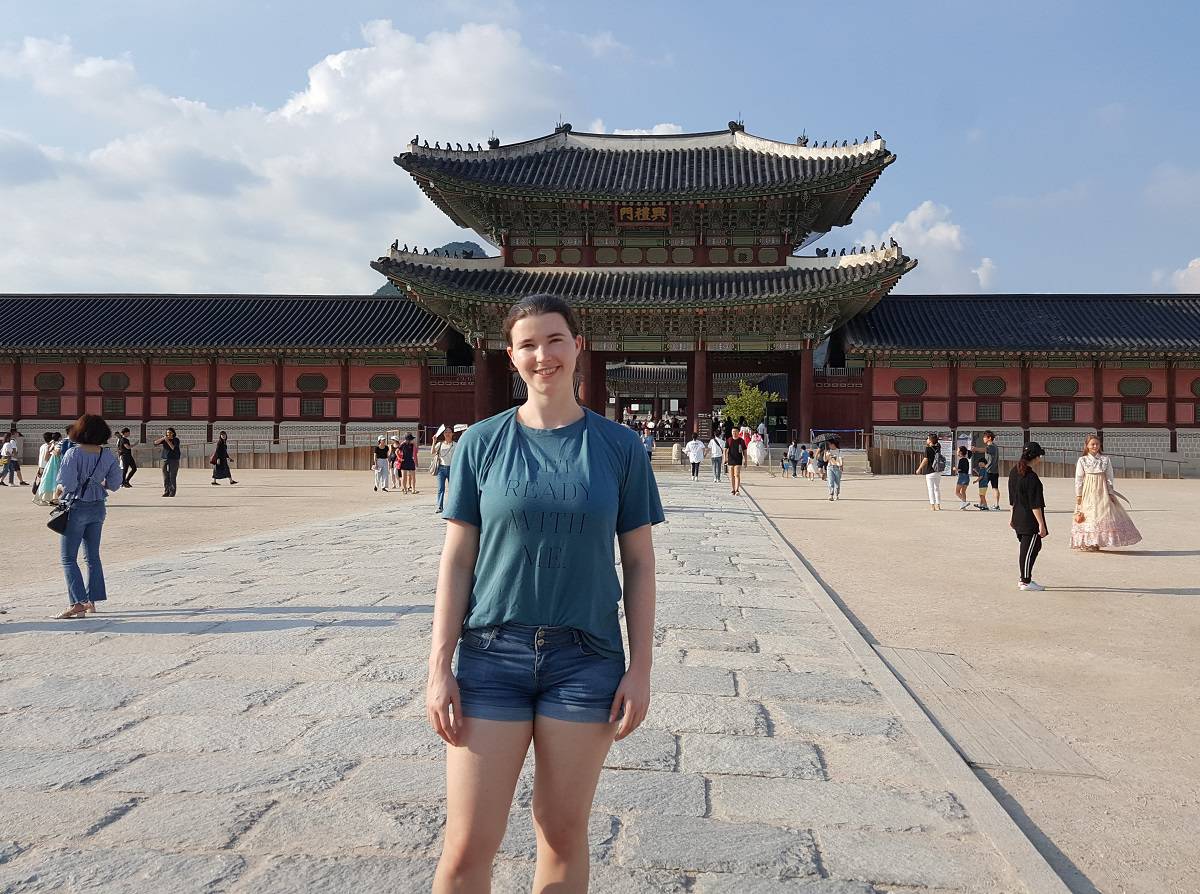
👗 What to Wear in Korea in May
- Light Layers: May in Korea can be mild but variable, so light layers like cardigans, lightweight jackets, or hoodies are ideal for staying comfortable throughout the day.
- Breathable Fabrics: Opt for breathable fabrics like cotton or linen to stay cool during warmer afternoons, especially as temperatures start to rise.
- Comfortable Footwear: Bring comfortable walking shoes or sneakers as you'll likely be exploring and walking a lot. Light sandals can also be a good choice for warmer days.
- Sunglasses & Hat: Protect yourself from the sun with sunglasses and a hat, especially if you'll be spending time outdoors.
- Long Pants or Skirts: Light long pants or midi skirts are great options, offering comfort and style without overheating.
- Light Scarf: A light scarf can be handy for cooler mornings and evenings, and it adds a stylish touch to your outfit.
- Rain Gear: May can bring some rain, so consider a compact umbrella or a light waterproof jacket just in case.
🗺️ Places to Visit in Korea in May
Jinhae
Jinhae, a district in Changwon City, is famous for its cherry blossom festival, Jinhae Gunhangje, which usually takes place in early April. However, visiting in early May allows you to enjoy the area's scenic beauty and other blooms without the large crowds.
The district is known for its stunning cherry blossom-lined streets, particularly around Yeojwacheon Stream and Gyeonghwa Station, both iconic photo spots. While the peak cherry blossom season may have passed, the picturesque surroundings, including the tranquil stream and vibrant green foliage, make Jinhae a charming destination in May.
The weather is warm and pleasant, ideal for walking tours, visiting historical sites like the Naval Academy, or taking a leisurely boat ride. Visitors should prepare for a relaxed day of exploration - comfortable walking shoes, a hat for sun protection, and a camera are highly recommended items fo pack.
Andong Hahoe Folk Village
Andong Hahoe Folk Village, a UNESCO World Heritage Site, offers a glimpse into Korea's past with its well-preserved traditional houses and strong cultural heritage. The village is known for its traditional mask dance performances and is surrounded by scenic landscapes, including the Nakdong River and Buyongdae Cliff.
May is a beautiful time to visit. The village is surrounded by lush greenery, and the warm weather makes it pleasant to stroll through the historic streets. The cultural performances and local festivals often held during this time of year provide a deeper understanding of Korean traditions and customs.
Prepare for a day of cultural immersion by wearing comfortable clothing and shoes suitable for walking on uneven terrain. Consider bringing a small blanket or cushion if you plan to watch one of the traditional performances, as seating can be on the ground. Also, bring a reusable water bottle to stay hydrated as you explore the village.
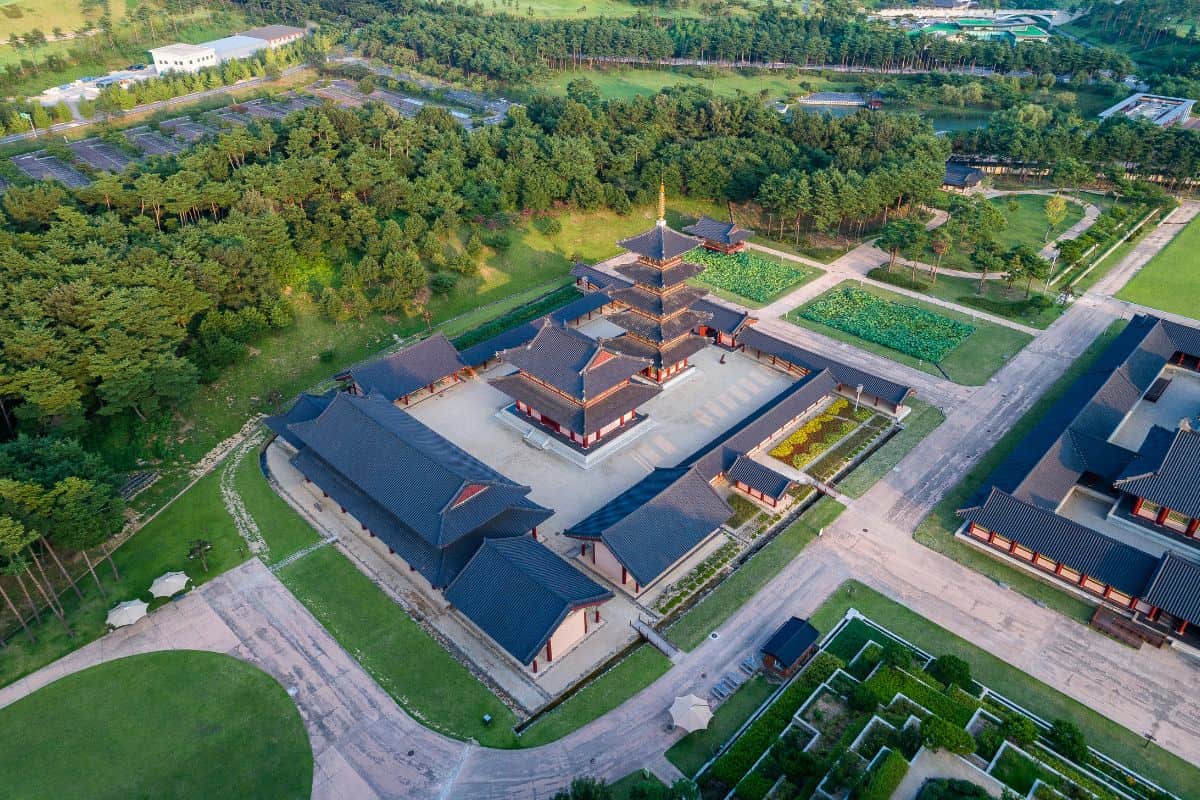
Buyeo
Buyeo, a former capital of the ancient Baekje Kingdom, is rich in history and culture. Key attractions include the Baekje Cultural Land, where visitors can explore reconstructed palaces and temples, and the Gungnamji Pond, Korea's first artificial pond, surrounded by beautiful lotus flowers in full bloom in May.
May is an ideal time to visit Buyeo because the pleasant weather allows for a comfortable exploration of its historical sites and natural beauty. The lush landscapes and blooming flowers add to the charm of the ancient ruins and historical landmarks.
Visitors should expect to do a fair amount of walking, so comfortable footwear is recommended. A guidebook or joining a local tour can enhance the experience by providing historical context. Since Buyeo is less crowded than more famous tourist spots, it offers a peaceful and reflective atmosphere.
Damyang
Damyang, located in South Jeolla Province, is renowned for its bamboo forests, particularly the Juknokwon Bamboo Garden. The town is also famous for its Metasequoia-lined Road, a scenic drive or walk through towering metasequoia trees. The area is a haven for nature lovers, offering serene landscapes and a relaxing atmosphere.
May is the perfect time to visit Damyang, as the bamboo forest is lush and green, and the weather is ideal for outdoor activities. The combination of cool shade from the bamboo and fresh spring air makes it a refreshing escape from the city. Additionally, the Damyang Bamboo Festival usually takes place in May, offering cultural experiences and local food.
Prepare for a day immersed in nature by wearing comfortable, breathable clothing and sturdy shoes suitable for walking. Don’t forget your camera to capture the beautiful scenery, and consider bringing a picnic to enjoy in one of the many tranquil spots within the bamboo forest.
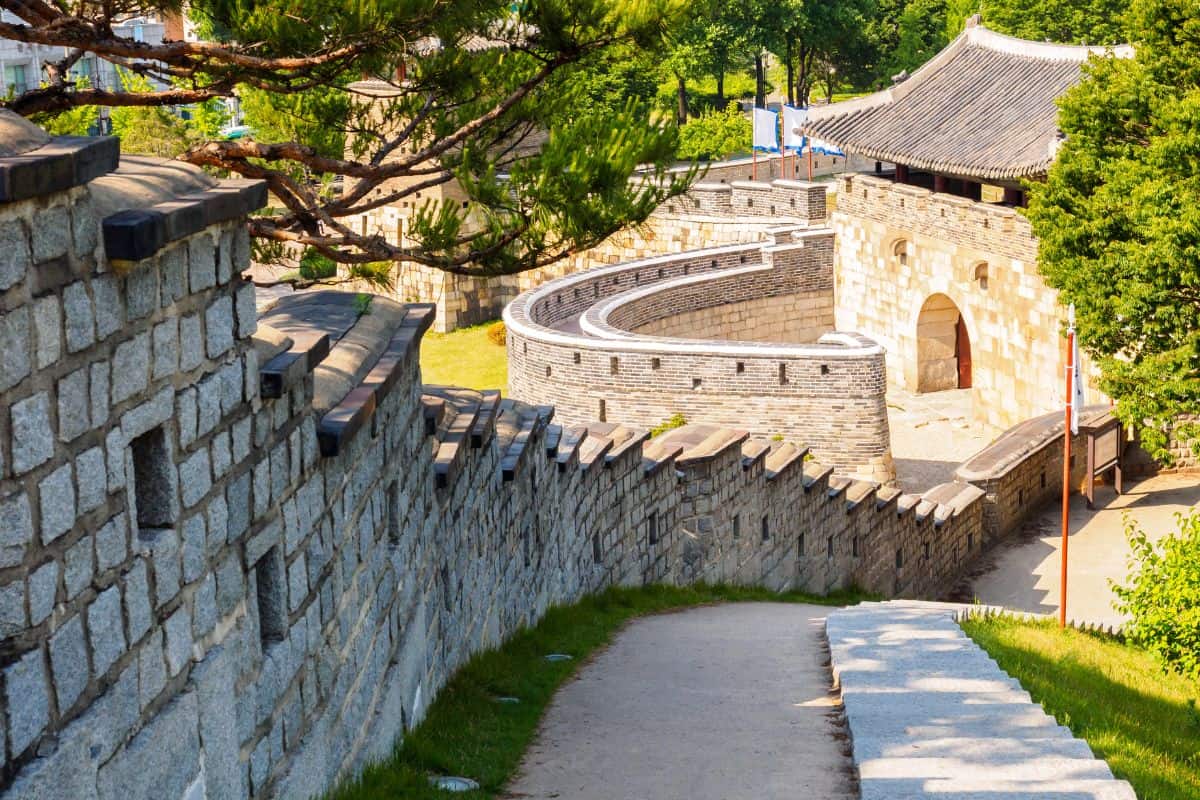
Suwon Hwaseong Fortress
Suwon Hwaseong Fortress, located just outside of Seoul, is a UNESCO World Heritage Site and one of Korea's most impressive historical landmarks. Built in the late 18th century, the fortress combines military architecture and beautiful landscapes, with walls stretching nearly 6 kilometers around the city.
May is arguably the best time to visit Hwaseong Fortress because the weather is ideal for walking along the fortress walls and exploring the surrounding areas. The Korean flowers and trees within the fortress grounds are in full bloom, adding a vibrant touch to the historical site. Visitors can also enjoy traditional martial arts performances and archery at the fortress.
When visiting, prepare for much walking, as the fortress is expansive. Wear comfortable shoes and bring a hat and sunscreen for sun protection. It’s also a good idea to bring a light jacket, as the weather can be cool in the early morning and late afternoon. Consider taking the Hwaseong train for a more leisurely tour of the site.
Oedo Botania
Oedo Botania is a stunning botanical garden on Oedo Island, just off the coast of Geoje. The garden features various plants and flowers, beautifully arranged in themed sections with a Mediterranean flair. The island's picturesque setting offers panoramic views of the sea and surrounding islands, making it a popular destination for nature lovers and photographers.
May is an ideal time to visit Oedo Botania as the gardens are in full bloom, with a riot of colors from the flowers and greenery. The warm, sunny weather enhances the garden's beauty and makes it a perfect day trip destination. Visitors can also enjoy a ferry ride to the island, adding to the overall experience.
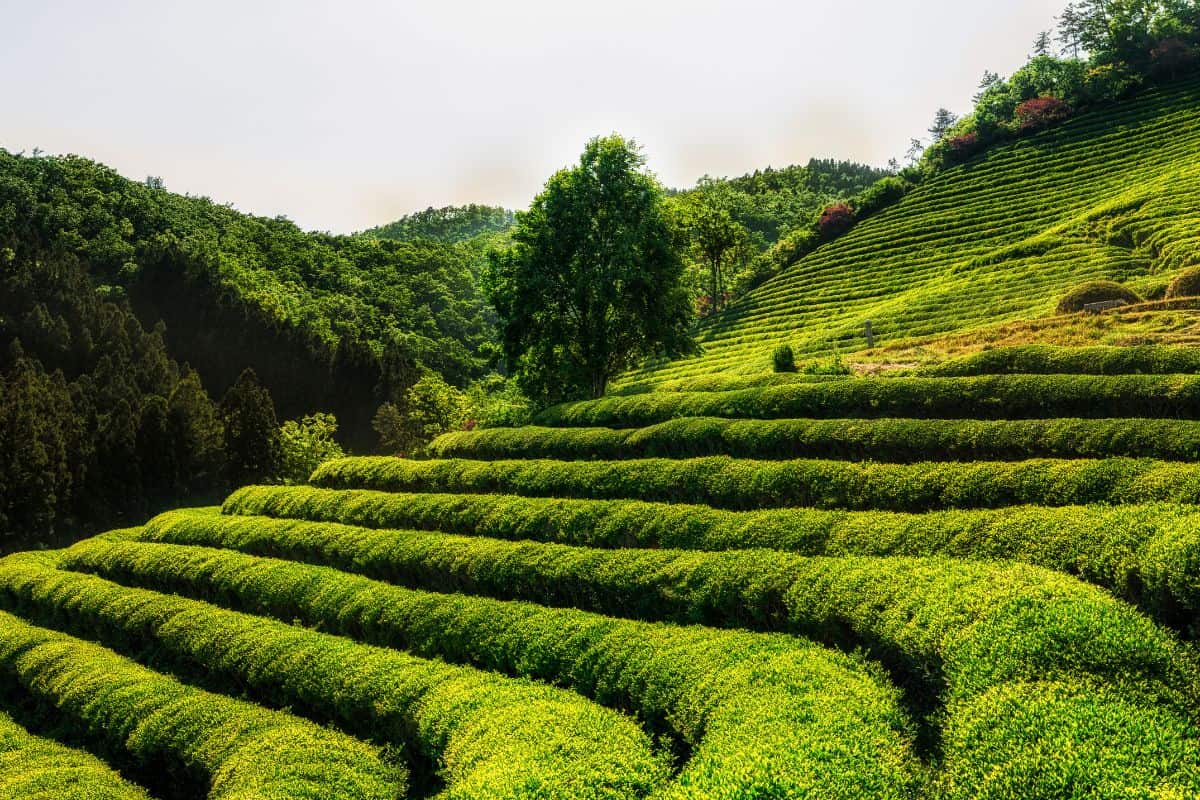
🎆 Korean Festivals in May
Boseong Green Tea Festival
The Boseong Green Tea Festival is an annual event that celebrates South Korea's rich tea culture. It highlights the importance of the Boseong region, renowned for producing some of the country's finest Korean teas. The festival is held in Boseong, South Jeolla Province, at the picturesque Boseong Green Tea Plantation.
This location is iconic for its sprawling tea fields that stretch across rolling hills, creating a serene and breathtaking landscape. During the festival, visitors can immerse themselves in various activities that showcase the tea-making process, including picking tea leaves, learning how to make green tea, and participating in tea-tasting sessions.
The festival also features traditional performances, cultural exhibitions, and even a green tea cooking contest where participants can create dishes infused with the distinctive flavor of green tea. The festival's cultural richness and stunning natural surroundings make it a must-visit event in May.

Jindo Miracle Sea Road Festival
The Jindo Miracle Sea Road Festival is a unique and extraordinary event that celebrates a natural phenomenon where the sea parts, revealing a hidden path between the mainland and the nearby island of Modo.
This fascinating occurrence, often compared to the biblical story of Moses parting the Red Sea, happens due to extreme tidal differences and is visible only a few times a year.
The festival occurs on Jindo Island, located in South Jeolla Province, where the 2.8-kilometer-long sea road briefly becomes accessible. During the festival, thousands of visitors flock to the island to witness and walk along this miraculous pathway. Participants often wear traditional Korean costumes and carry torches, adding to the mystical atmosphere of the event.
The festival is also a vibrant cultural celebration featuring traditional music, folk games, and various performances that reflect the region's rich heritage, all of which starts as early as sunrise, when people begin crossing to the island.

Lotus Lantern Festival
The Lotus Lantern Festival, known as Yeon Deung Hoe, is one of Korea's most significant Buddhist celebrations, held every year around Buddha's Birthday (according tot he Lunar calendar) to honor the birth of Buddha. With a history spanning over 1,200 years, this traditional festival is deeply rooted in Korea's cultural and religious heritage.
The festival's main events are held in Seoul, with key locations including Jogyesa Temple, Bongeunsa Temple, and the streets of downtown Seoul, particularly in the Jongno area.
The festival's highlight is the grand lantern parade, where thousands of participants carry intricately designed lanterns in various shapes, such as lotus flowers, dragons, and other symbolic figures. As the lanterns illuminate the night sky, they create a magical and serene atmosphere, symbolizing the spreading of light and wisdom.
Alongside the parade, the festival includes lantern exhibitions, traditional performances, and temple activities like lantern-making and participating in Buddhist rituals.
🎉 Korean Public Holidays in May
Children's Day
Children's Day, celebrated on May 5, is a national public holiday in South Korea dedicated to children. It's a day when families come together to celebrate the joys of childhood.
Parents often take their children to amusement parks, zoos, and other attractions, and gifts are commonly given to children. The holiday was established in 1923 by the children’s rights activist Bang Jeong-hwan to promote respect and love for children.
Buddha's Birthday
Buddha's Birthday, also known as Seokga Tansinil, is one of the most significant public holidays in South Korea, celebrated on the 8th day of the 4th month of the lunar calendar, which usually falls in May.
The day is marked by colorful lanterns displayed at Buddhist temples across the country, and many temples hold special ceremonies and events. The most famous celebration is the Lotus Lantern Festival in Seoul, which features a grand parade of lanterns.
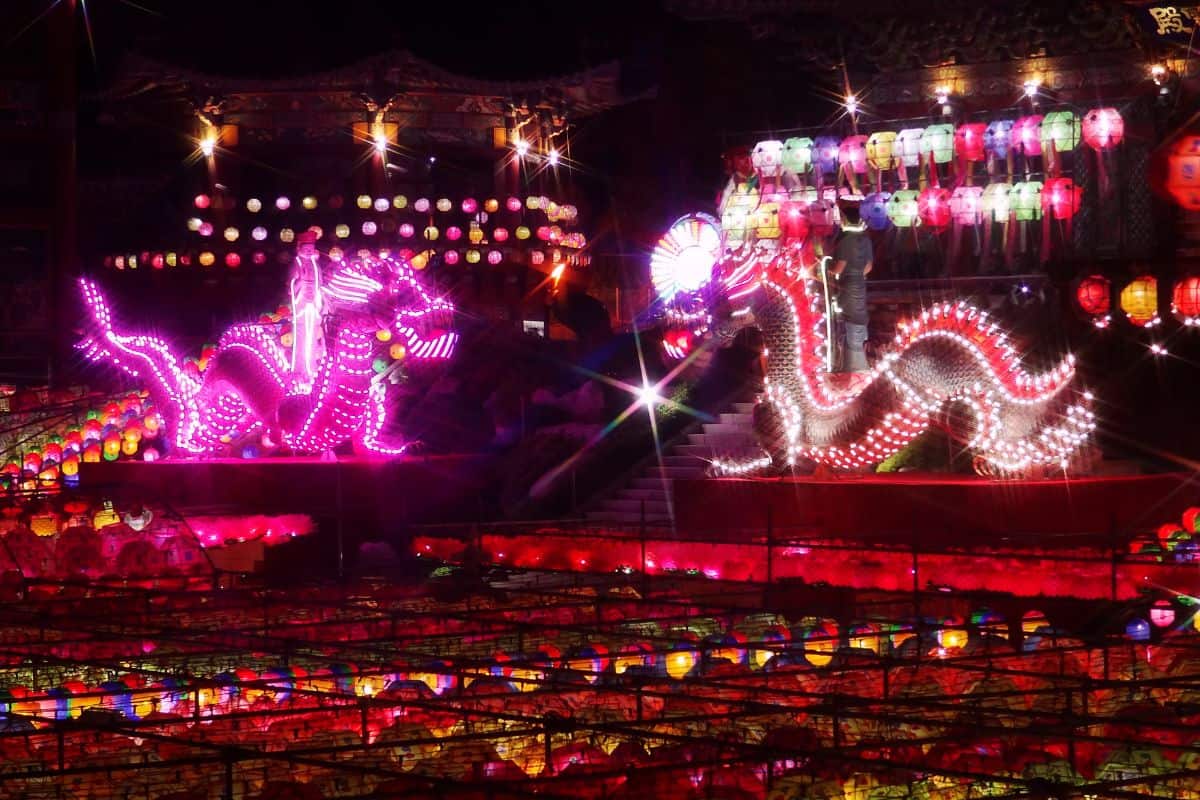
🍜 Korean Foods to Try in May
Samgyetang
Samgyetang is a traditional Korean soup made by stuffing a whole young chicken with glutinous rice, fresh ginseng, garlic, and jujubes, then simmering it until tender. This nutritious dish is often enjoyed in the summer to replenish energy, but it's equally popular in the spring as the weather warms up.
The rich broth, combined with the health benefits of ginseng, makes it a perfect dish to try in May, especially as you prepare for outdoor activities.
Bingsoo
Bingsoo is a popular Korean dessert that consists of shaved ice topped with various ingredients such as sweetened red beans (pat), condensed milk, fruits, and even ice cream.
As the weather in May becomes warmer, this refreshing dessert is a must-try. The classic patbingsu (red bean shaved ice) is a favorite, but there are countless variations, including those topped with fresh strawberries, mango, or green tea.
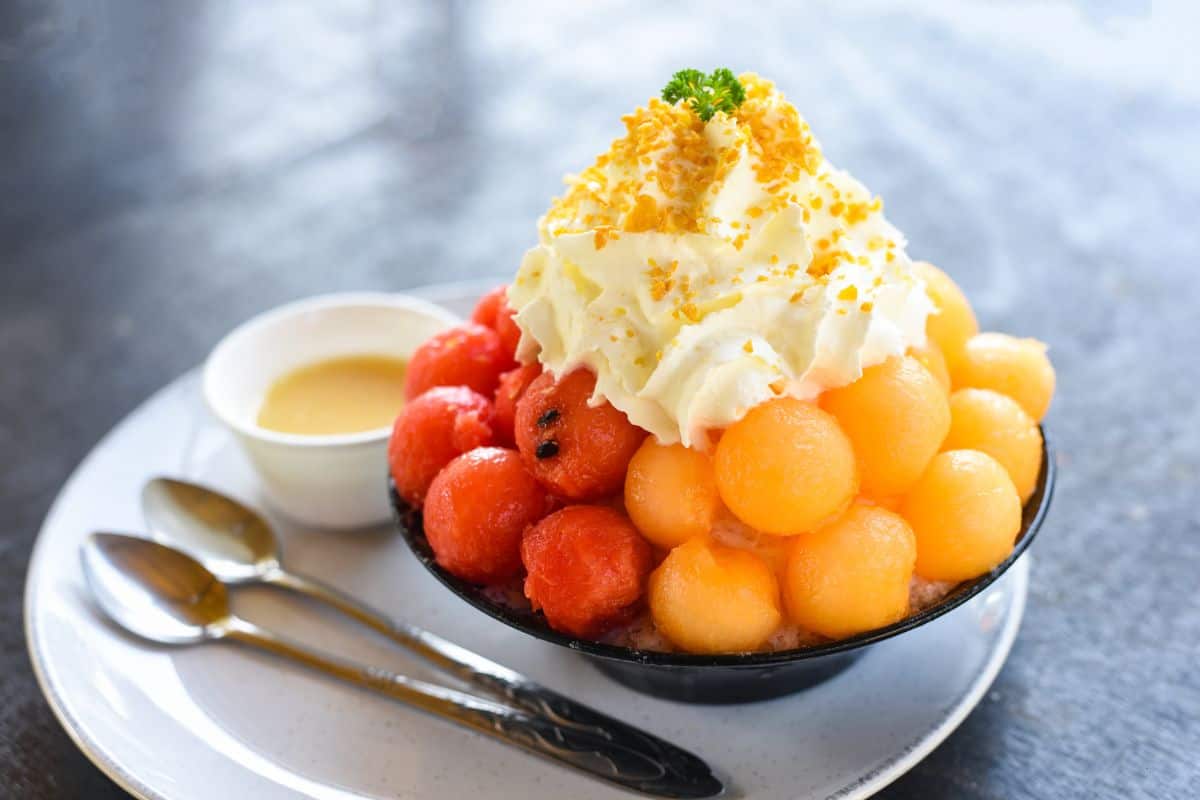
Naengmyeon
Naengmyeon is a cold noodle dish, perfect for the warmer days in May. The noodles are made from buckwheat or sweet potato starch and are served in a chilled, tangy broth, often with slices of pear, cucumber, boiled egg, and sometimes beef.
There are 2 main types of naengmyeon: mul naengmyeon (in cold broth) and bibim naengmyeon (spicy mixed noodles). This dish is refreshing and offers a unique taste experience.
Jjajangmyeon
Jjajangmyeon is a Korean-Chinese fusion dish consisting of wheat noodles topped with a thick, savory black bean sauce made from chunjang (a salty black soybean paste), pork, and vegetables.
It's a Korean comfort food now enjoyed across the Peninsula, and is widely available in restaurants across the country. This hearty dish is great to enjoy during May, especially if you're looking for something filling and flavorful.
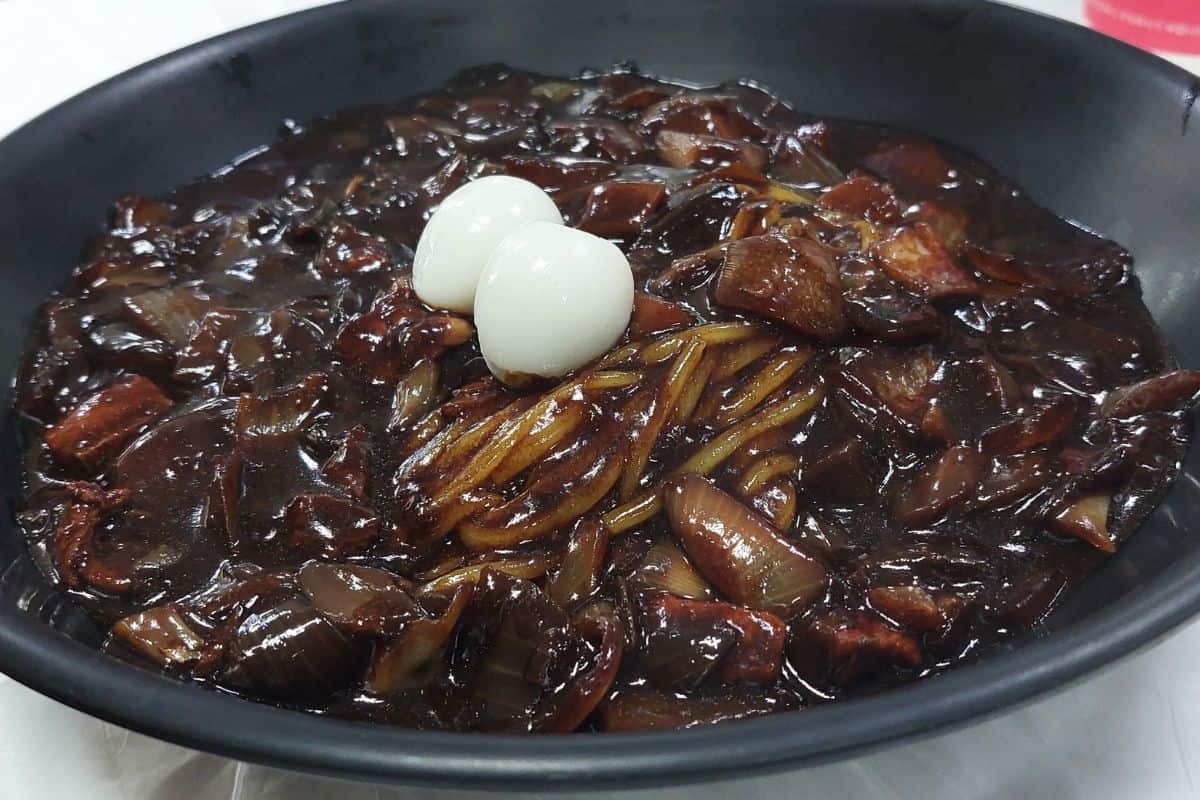
Doenjang Jjigae
Doenjang jjigae is a traditional Korean stew made with doenjang (fermented soybean paste), tofu, vegetables, and sometimes meat or seafood. The stew has a rich, earthy flavor and is often enjoyed with a bowl of rice. It's a warming dish that’s popular year-round, but in May, it offers a comforting flavor that complements the season's fresh vegetables.
Korean Strawberries
May is the peak season for Korean strawberries, known for their sweetness and juiciness. You can find these strawberries at local markets, and they are often used in desserts like bingsoo and cakes or simply enjoyed fresh. Korean strawberries are a seasonal treat that visitors should definitely try while they're still at their best.
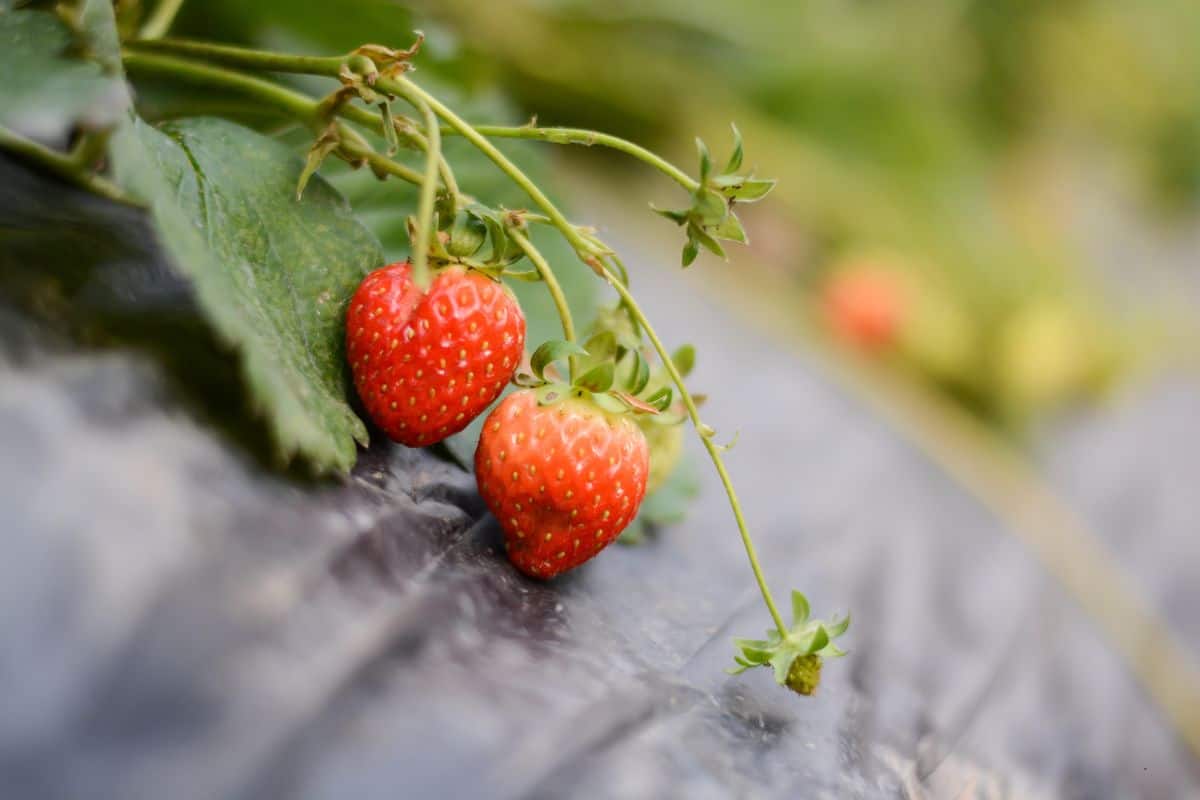
📝 Korean Itinerary for May
Day 1: Exploring Seoul’s Historical and Cultural Sites
Start your itinerary in Seoul, South Korea’s vibrant capital. Begin your day with a visit to Gyeongbokgung Palace, one of the most iconic and grandest palaces from the Joseon Dynasty. Witness the changing of the guard ceremony and then explore the beautiful grounds, including the National Folk Museum of Korea.
Afterward, head to Insadong, a charming neighborhood filled with traditional tea houses, art galleries, and shops selling Korean crafts and souvenirs. In the afternoon, visit Jogyesa Temple to experience a serene Buddhist temple in the city's heart.
If your trip coincides with Buddha’s Birthday, you’ll enjoy the sight of the temple adorned with colorful lanterns. End your day by enjoying a bowl of samgyetang or another hearty Korean dish at a local restaurant.
Day 2: Day Trip to Jinhae and Korean Comfort Foods
On the second day, take a day trip to Jinhae in Changwon City. Although the famous cherry blossom festival has passed, the area still offers picturesque views, especially around Yeojwacheon Stream and Gyeonghwa Station. Spend your morning strolling along the scenic paths lined with greenery and enjoy the tranquil atmosphere.
Return to Seoul in the afternoon and treat yourself to jjajangmyeon, a beloved Korean comfort food. This hearty dish will satisfy your hunger after a day of sightseeing. In the evening, explore the bustling streets of Myeongdong for some shopping and street food, where you can taste a variety of local snacks and desserts.
Day 3: Discovering Nature in Damyang and Refreshing Treats
Dedicate your third day to exploring the natural beauty of Damyang. Visit the Juknokwon Bamboo Garden, a stunning forest of towering bamboo that offers a peaceful retreat from the city. Take a leisurely walk through the garden's trails, enjoying the fresh air and the calming rustle of bamboo leaves.
Afterward, stroll along the Metasequoia-lined Road, famous for its picturesque avenue of tall trees. As May brings warmer weather, cool down with a refreshing bingsoo topped with fresh Korean strawberries, a seasonal treat across the country.
Return to Seoul in the evening, and consider visiting Dongdaemun Design Plaza for a nighttime stroll and to admire its futuristic architecture.
Day 4: Cultural Immersion in Andong and Traditional Korean Stew
On the fourth day, travel to Andong Hahoe Folk Village, a UNESCO World Heritage Site that offers a glimpse into Korea’s past with its well-preserved traditional houses and cultural heritage. Spend the day wandering through the village, watching traditional mask dance performances, and learning about Korean history and customs.
The village is surrounded by beautiful natural landscapes, making it a perfect setting for a relaxing day. In the evening, enjoy a comforting bowl of doenjang jjigae, a hearty dish that showcases the deep, earthy flavors of traditional Korean cuisine. Return to Seoul in the evening, where you can explore the nightlife or simply unwind at your accommodation.
Day 5: Jindo Miracle Sea Road Festival and Seasonal Delights
For your final day, venture to Jindo Island to witness the Jindo Miracle Sea Road Festival. This unique event occurs when the sea parts reveal a 2.8-kilometer-long path between the mainland and Modo Island. This natural phenomenon is celebrated with traditional Korean costumes, torchlit walks, and cultural performances, all starting as early as sunrise.
Participate in the festival’s activities and enjoy the vibrant atmosphere as you walk along the sea road. After returning to Seoul, take some time to relax and reflect on your trip. End your day by savoring seasonal Korean fruits from a local market.
📸 Exclusive Tours for May
Nami Tour, Korean Garden, & Rail Bike Day Trip
Embark on an unforgettable journey from Seoul with the Nami Island, Korean Garden & Rail Bike Day Trip. Whether you choose a private or group tour, this adventure perfectly blends nature, culture, and thrill. Every tour begins at the Garden of Morning Calm, where tranquility meets beauty in a stunning botanical garden.
Wander through the vibrant displays of flowers and plants, taking in the peaceful ambiance of this Korean-style paradise. Your next stop is the iconic Nami Island, a haven of natural beauty and cultural richness. Stroll through tree-lined avenues, discover captivating art installations, and soak in the romantic atmosphere that makes this island a beloved destination.
For those craving a touch of excitement, the optional Gangchon Railbike ride awaits. Pedal along picturesque old railway tracks, enjoying breathtaking views of the lush countryside and the serene Bukhangang River. This day trip is an ideal escape from the hustle and bustle of Seoul, offering a memorable experience for all.
Seoraksan, Nami Island, and Garden of Morning Calm Tour
The Mt. Seorak, Nami, and Garden of Morning Calm Tour takes visitors from Seoul to explore Korea's stunning landscapes. It begins at Seoraksan (Seorak Mountain), a UNESCO site featuring dramatic rock formations, dense forests, and the Shinheungsa Temple. If weather permits, a cable car ride offers panoramic views. In autumn, the Osaek trail showcases vibrant fall foliage.
The tour then moves to Nami Island, known for its picturesque pathways and serene ambiance. The final stop is the Garden of Morning Calm, which highlights Korea’s natural beauty and traditional aesthetics. Group tour participants are dropped off at Dongdaemun History & Culture Park or Myeongdong station, while private tours include hotel transfers.
❓ Frequently Asked Questions
May in Korea offers mild, pleasant weather with temperatures ranging from 52°F to 80°F (11°C to 27°C), making it ideal for outdoor activities and sightseeing.
Yes, May is less crowded compared to the cherry blossom season and summer holidays, providing a more relaxed experience for most travelers (and in my option, the best mix of weather).
Pack light layers, comfortable walking shoes, a light jacket for cooler evenings, and rain gear like a compact umbrella for occasional spring showers.

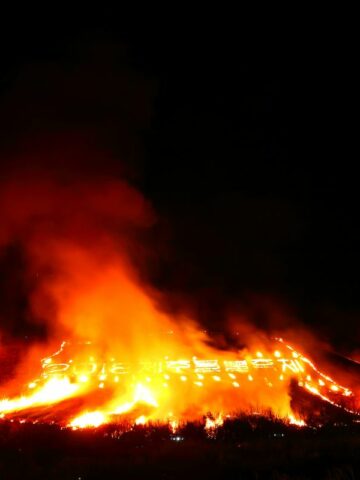
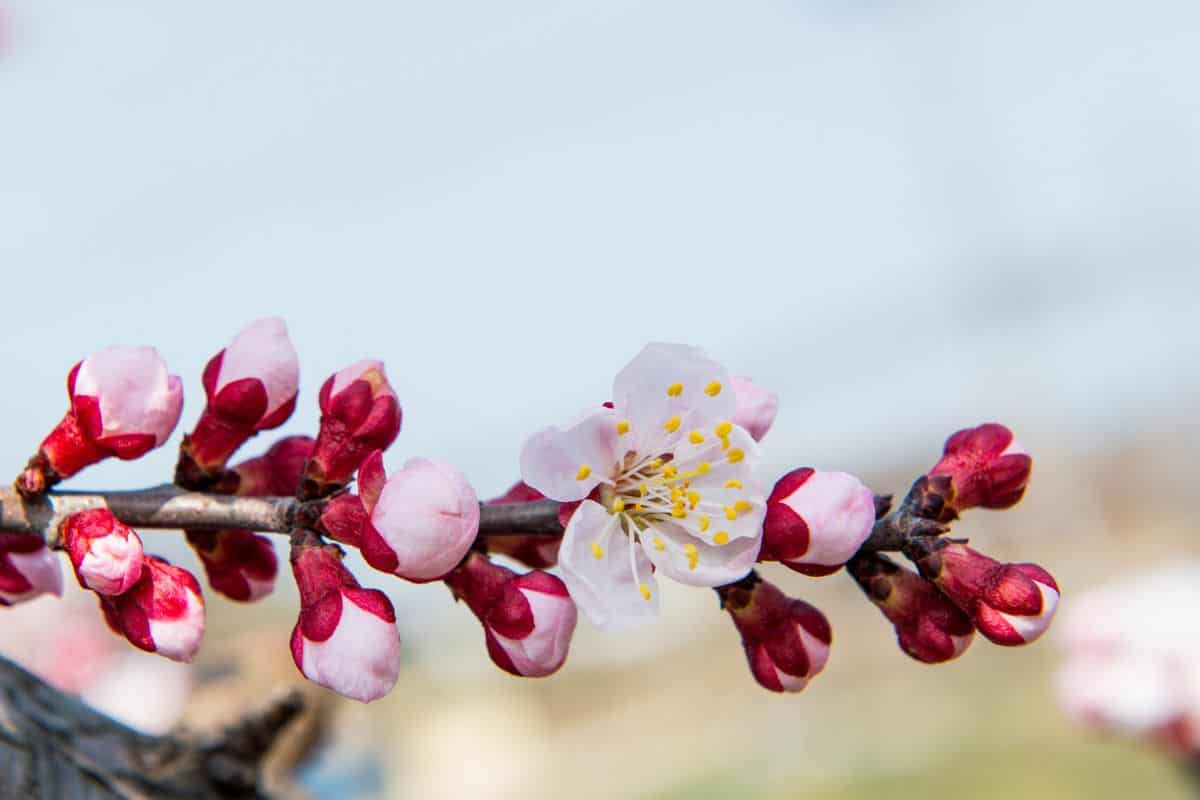
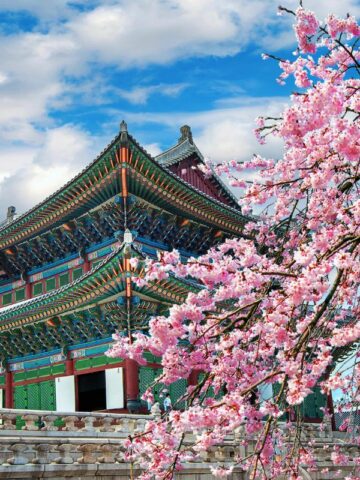
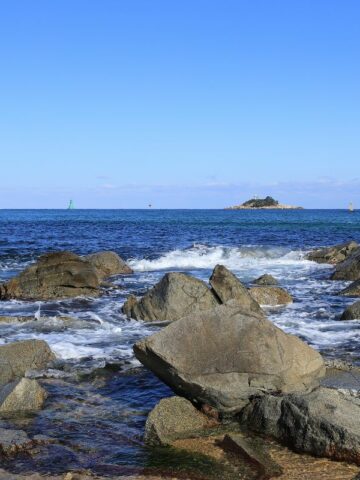
Leave a Reply